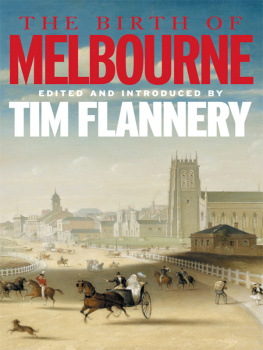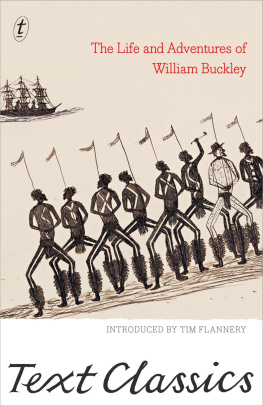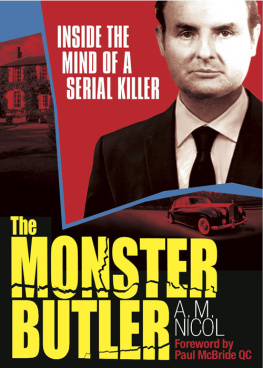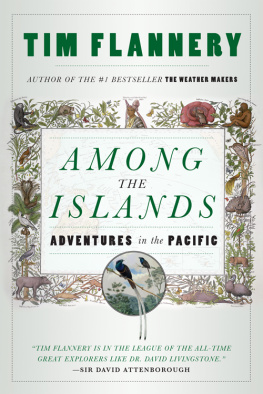Introduction and the editing in this edition copyright 1997 by Tim Flannery
All rights reserved. No part of this book may be reproduced in any form or by any electronic or mechanical means, including information storage and retrieval systems, without permission in writing from the publisher, except by a reviewer, who may quote brief passages in a review. Any members of educational institutions wishing to photocopy part or all of the work for classroom use, or publishers who would like to obtain permission to include the work in an anthology, should send their inquiries to Grove/Atlantic, Inc., 841 Broadway, New York, NY 10003.
The author gratefully acknowledges Edward Stanley for his advice on naval history.
First published in 1822
Published in 1997 by The Text Publishing Company, Melbourne, Australia
Printed in the United States of America
FIRST GROVE PRESS EDITION
Library of Congress Cataloging-in-Publication Data
Nicol, John, 1755-1825.
[Life and adventures, 1776-1801]
The life and adventures of John Nicol, mariner / edited and introduced by Tim Flannery.
p. cm.
Originally published: Life and adventures, 1776-1801. Melbourne, Vic. : Text. Pub., 1997.
Includes index.
ISBN 0-8021-3746-6 (pbk.)
eISBN: 978-0-8021-9109-0
1. Nicol, John, 17551825Journeys. 2. Voyages and travels. 3. United StatesHistoryRevolutionPersonal narrativesBritish. I. Flannery, Tim F. (Tim Fridtjof), 1956 II. Title.
G530.N6 1999
910.4'5dc2199-24704
Cover design by Calvin Chu
Grove Press
841 Broadway
New York, NY 10003
00 01 02 03 10 9 8 7 6 5 4 3 2 1
Introduction
by Tim Flannery
J OHN NICOL TWICE circled the globe, in the process visiting all six habitable continents. He fought American revolutionaries and Napoleon's navy, was in Hawaii when Cook's murderers were still young, in Port Jackson when Sydney consisted of about a thousand souls, and in the West Indies when African slaves were beginning to experiment with the music which would become blues and jazz. In short, as he roamed the world in the late eighteenth century, he saw the modern age in its infancy.
The world John Nicol records is not one of admirals, governors and high officials, for he was by his own admission a simple bungs'an unlettered cooper. He describes a world seen from below decks; a world peopled by slaves, convicts and Chinese barbers, many of whom Nicol counted among his friends. As such, his story is an extreme rarity. People like Nicol usually lacked the means to have their adventures recorded, and publishers were largely uninterested in such autobiographies. Indeed, a significant fraction of Nicol's compatriots would not even have lived to tell their stories. When he sailed, mortality rates of 15 per cent per annum were not looked upon as especially bad, yet Nicol survived twenty-five years at sea.
The story of how this book came into existence is almost as remarkable as the one Nicol himself tells. Picture yourself in a street in Edinburgh with the freezing winter of 1822 just beginning to relax its grip. An old derelict totters feebly along, picking tiny fragments of coal from between the icy cobbles. These he places in the pocket of an old apron tied round his waist. They will be used to light a small fire, over which he will crouch, trying to fight off the chill. As he searches for his coals, the old man is approached by a very strange person and so begins the encounter which, after a long and happenstance history, places this book in your hands today.
1Simmons, J. J. (III), Those Vulgar Tubes, Studies in Nautical Archaeology no. 1, Department of Archaeology, Texas University, 1991.
2Nicol, John, The Life and Adventures of John Nicol, Mariner, with a foreword and afterword by Alexander Laing , Cassell & Company, London, 1937, 27.
The very strange person was John Howell, who was to record and edit Nicol's work. Even in nineteenth-century Scotland Howell was an anomaly. He described himself as a polyartist. Although a bookbinder by trade, he was an inveterate inventor and tinkerer by nature. The most enduring of his contrivances is the plough, a device used by bookbinders well into the present century. Alexander Laing, who gave some biographical notes on Howell, remarked of this invention that many a careless binder has ruined good books by too exuberant cropping [with it].
Howell's other inventions included a reliable salve for the ringworm and a method for the fabrication of false teeth. Transport also intrigued him. He invented a flying machine (the testing of which, from the roof of an old tannery, cost him a broken leg), and a sort of prototype submarine. This latter nearly led to fratricide, for John encouraged an unwilling brother to enter the large model of a fish for its test run on the River Leith. The brother refused, however, and John took his place. A contemporary account reports that:
Scarcely had the fish entered the water when it capsized: the keel turning upwards, and poor John was submerged. Sounds of an alarming kind were heard to issue from the belly of the fish, and no time was lost in dragging it to the bank, when the inventor was liberated from his perilous position; but it took nearly half an hour before suspended animation was fully restored.
1 Life and Adventures , 1937, 26.
2ibid., 28.
Howell's other great interest lay in the exploits of military men and adventurers. He published five books, three of which concerned such people. The first, Journal of a Soldier of the 71st, or Glasgow Regiment was followed by The Life and Adventures of John Nicol, Mariner and, finally, The Life of Alexander Alexander Written by Himself. Howell's method seems to have consisted of befriending old soldiers and sailors, then spending months writing down or editing their life stories. One wonders whether they moved into his house for the duration. Whatever the case, Howell's motives were noble ones, for he signed over royalties to his adoptees, and endeavoured to use their stories to obtain for them their well deserved pensions.






















